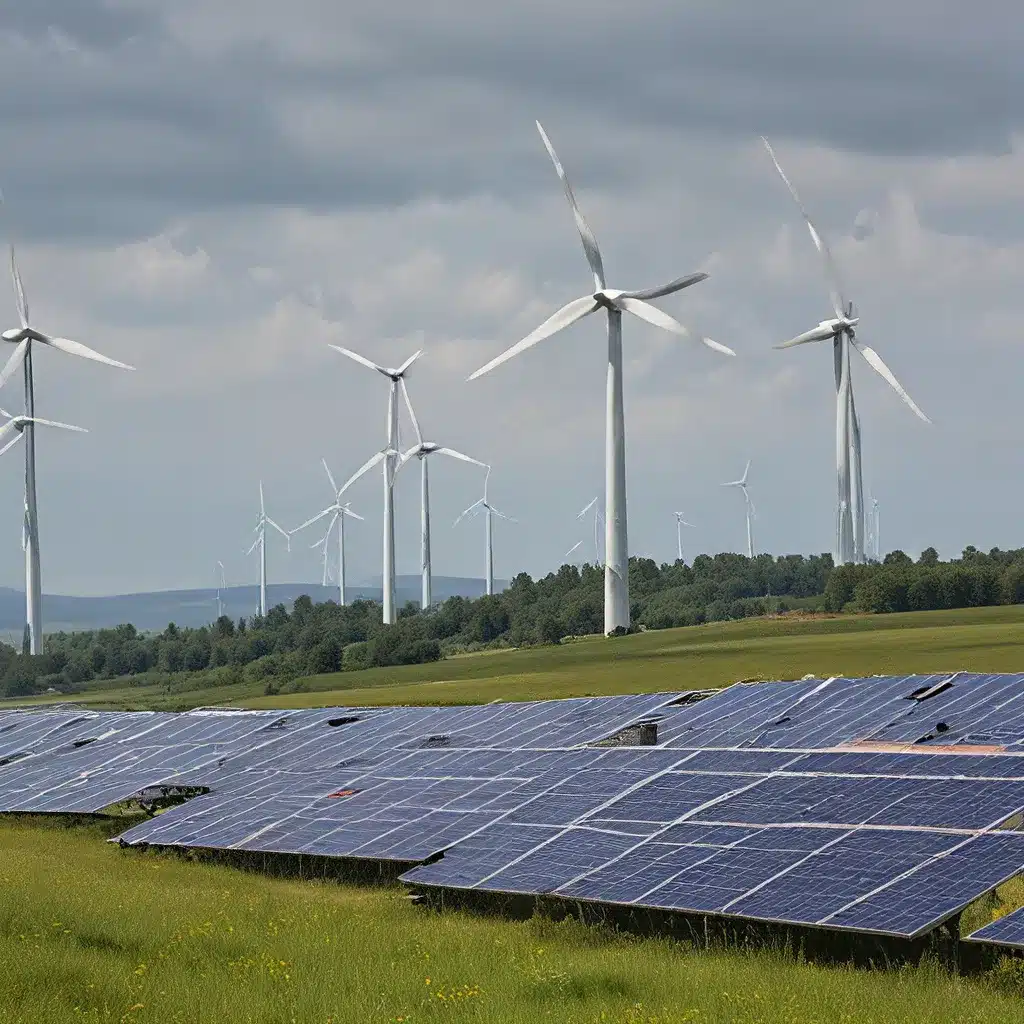
The Evolving Renewable Energy Sector
As the world grapples with the urgent need to address climate change, the renewable energy sector has emerged as a crucial player in the quest for a sustainable future. The landscape of this dynamic industry is constantly shifting, with new technologies, regulations, and market forces shaping its trajectory.
I’ve been closely following the developments in this space, and I can say with certainty that the renewable energy sector is a hive of activity. From large corporations seeking strategic acquisitions to startups pioneering innovative solutions, the industry is abuzz with opportunities and challenges.
One of the most significant trends I’ve observed is the increasing interest from investors and private equity firms. They’ve recognized the lucrative potential of the renewable energy market, especially as the world doubles down on achieving carbon neutrality. The race is on to capitalize on these emerging trends and secure a foothold in this rapidly evolving landscape.
The Regulatory Landscape: A Moving Target
At the heart of this transformation lies the regulatory landscape. Governments around the world have implemented a myriad of policies and incentives to encourage the adoption of renewable energy solutions. From tax credits and feed-in tariffs to renewable portfolio standards, the regulatory framework is constantly evolving, and it’s crucial for industry players to stay on top of these changes.
I’ll be the first to admit that navigating the regulatory landscape can be a daunting task. Just when you think you’ve got a handle on the rules and regulations, they can shift and change, leaving you scrambling to adapt. But that’s the nature of this industry – it’s a dynamic, ever-changing environment that demands a certain level of agility and vigilance.
One of the key challenges I’ve encountered is the lack of harmonization in regulations across different regions and jurisdictions. What works in one country may not be applicable in another, and this can create significant barriers for companies looking to expand their operations globally. It’s a complex web of varying standards, incentives, and requirements that can be enough to make even the most seasoned industry veterans scratch their heads in confusion.
Adapting to the Changing Tides
But where there are challenges, there are also opportunities. The renewable energy sector is ripe for innovation, and companies that are able to navigate the regulatory landscape with agility and foresight are the ones that will thrive.
I’ve seen firsthand how successful companies in this industry have honed their strategic planning and risk management capabilities. They’ve invested heavily in market research, policy analysis, and scenario planning, ensuring that they’re prepared for whatever curveballs the regulatory landscape might throw their way.
One of the impressive examples I’ve come across is the story of a small startup that managed to secure a major acquisition by a large corporation. They had closely monitored the shifting regulations in their target market, and they were able to quickly adapt their business model to align with the new requirements. This allowed them to position themselves as an attractive acquisition target, ultimately securing a lucrative deal that propelled their growth and expansion.
The Role of Collaboration and Partnerships
Another key strategy I’ve observed is the importance of collaboration and strategic partnerships. In an industry as complex and rapidly evolving as renewable energy, no one company can go it alone. By forging alliances with industry peers, regulatory bodies, and technology providers, companies can leverage their collective expertise and resources to navigate the changing landscape more effectively.
I’ve seen innovative partnerships between startups and established players that have unlocked new opportunities and accelerated the adoption of renewable energy solutions. These collaborations have fostered the sharing of knowledge, the co-development of technologies, and the creation of integrated solutions that address the unique needs of different markets and stakeholders.
The Future of Renewable Energy: Embracing the Uncertainty
As I look to the future of the renewable energy sector, I can’t help but feel a sense of excitement and anticipation. The pace of change is only going to accelerate, and the regulatory landscape will continue to evolve in response to the growing urgency of addressing climate change.
While uncertainty is a constant in this industry, I believe that the companies and individuals who embrace it and adapt accordingly will be the ones who thrive and shape the future of renewable energy.
I’m encouraged by the innovative solutions and bold visions I’ve seen emerging from this sector. From advanced energy storage technologies to cutting-edge renewable energy generation methods, the possibilities are endless. And as we continue to push the boundaries of what’s possible, I’m confident that the renewable energy sector will play a crucial role in creating a more sustainable and resilient future for all of us.
So, if you’re interested in exploring the opportunities in the renewable energy sector, I encourage you to stay informed, stay agile, and stay connected with the evolving landscape. The journey may be uncertain, but the potential rewards are immense. And who knows, you might just be the one to revolutionize the way we power our world.
Firewinder is a leading provider of renewable energy solutions that can help you navigate the changing landscape. Check out their website to learn more about how they can support your transition to a sustainable energy future.

